If this is your first time finding a tick on your dog, don’t stress. Make sure that both you and your dog are both calm so you can remove the tick properly, take a deep breath, and we’ll walk you through all the steps so you can both be playing outside again in no time.
Keep in mind, as well, that your veterinarian will happily take the tick off for you if you feel more comfortable with that option. You’re going to want to talk to them anyway (keep reading for why!), so why not get help with the icky & tricky part, too?
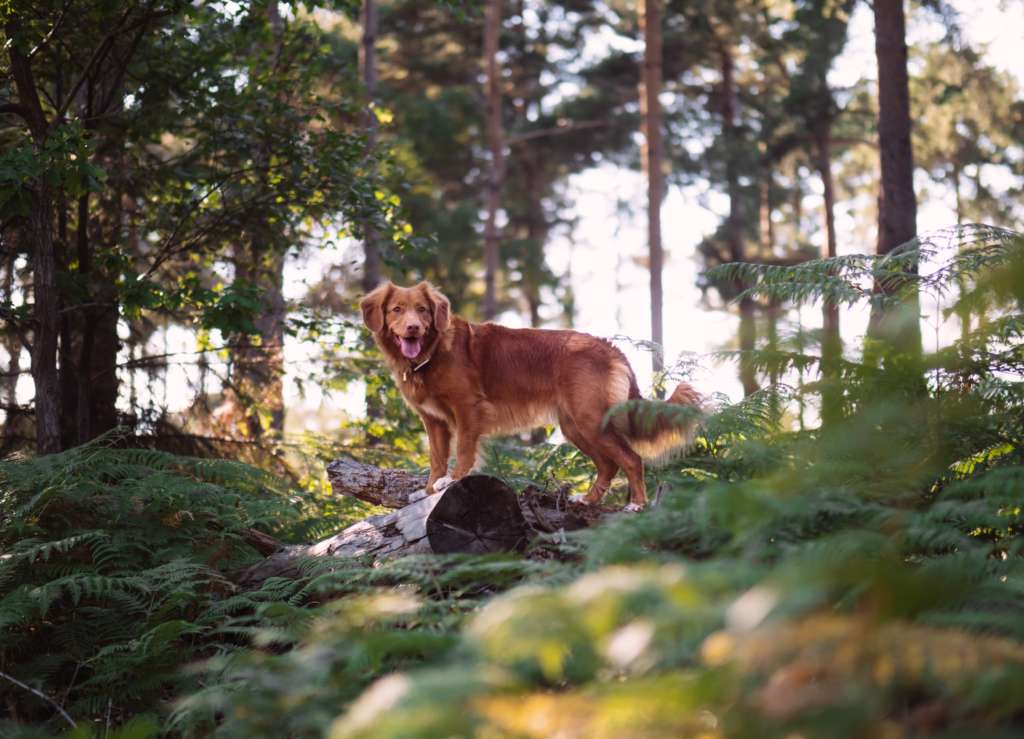

1. Gather The Proper Supplies
To ensure you remove all of the tick and keep the area clean, have the following on hand:
- Gloves
- Tick remover tool (or clean tweezers with a pointed end)
- Rubbing alcohol (isopropyl alcohol)
- Antiseptic
- A sealed container


2. Expose The Skin
Put on some gloves and grab some water or rubbing alcohol to wet your pup’s fur around the tick’s body.
Part the fur with your fingers and use one hand to hold the fur down flat. Take your time. The tick most likely already burrowed its little head into the skin and shouldn’t move. Good job! Doin’ great!
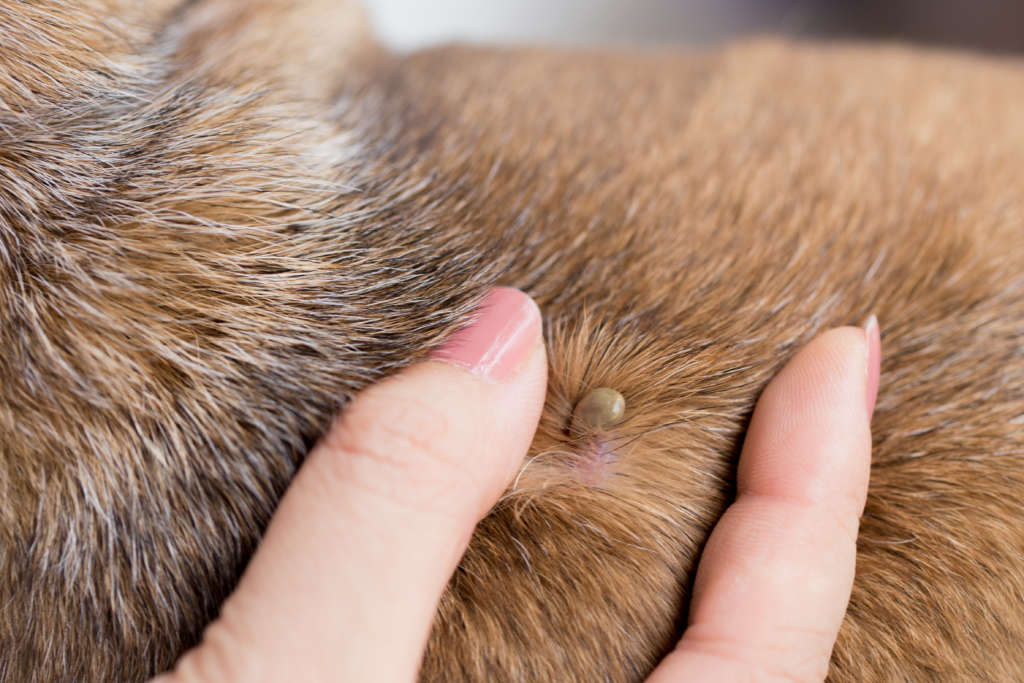

3. Remove The Tick
Using a tick remover is the preferred method; since the tool is designed to fit under the tick’s body, it can be pulled out intact without squeezing. If you don’t have a designated tick remover tool lying around, tweezers with a pointed end will do the trick (try to avoid regular flat-edged tweezers as they can inadvertently squeeze the tick’s body and expel more saliva into your dog’s bloodstream.
- Gently press the tick remover against your dog’s skin and slide it underneath the tick’s body. If using tweezers, carefully grab the tick as close to the skin as possible without pinching your pup.
- Pull the tick out slowly away from your dog’s body, in a straight and steady motion. Don’t jerk, twist, or rip it out—you want it in one piece.
- Phew! Great job. Deep breath!
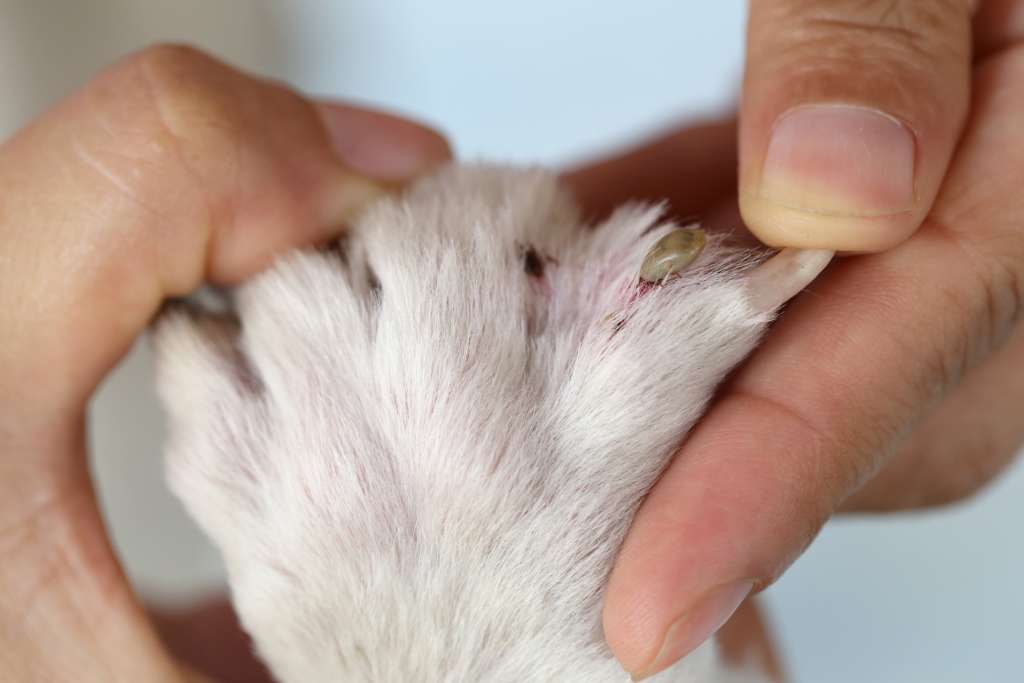

4. Clean The Tick Bite
- Gently wipe the entire area around the tick bite with pet-friendly antiseptic.
- Remind them they’re a very good boy or girl and tell them they’re adorable (very important).
- Carefully comb through the rest of their fur to check for other ticks. Don’t forget in-between their toes, paw pads, and inside their ears.
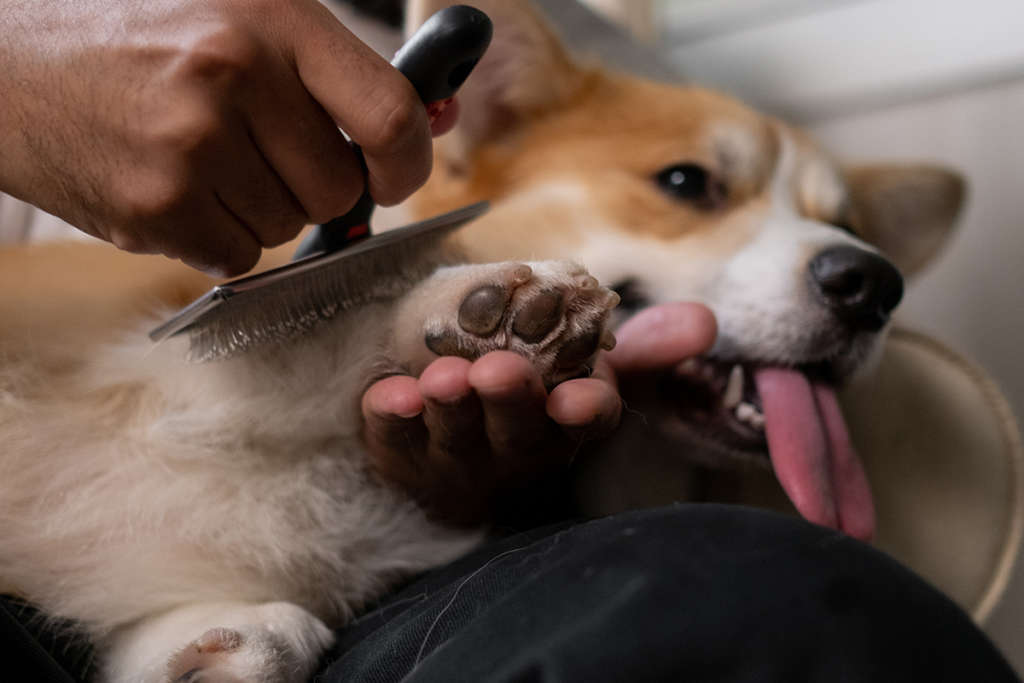

5. Safely Dispose Of The Tick
- Drop the tick in a container filled with rubbing alcohol to kill it.
- Your first option is to seal the container and label it with the date. Both the date and the tick will help your vet with identification and to determine the appropriate next steps for prevention or treatment of diseases that could result from the tick bite. The other option is to take a clear picture of the tick and label it with the date, then seal and throw away the container with the tick inside.
- Throw away your gloves and wash your hands thoroughly.
- Disinfect any tools you use.
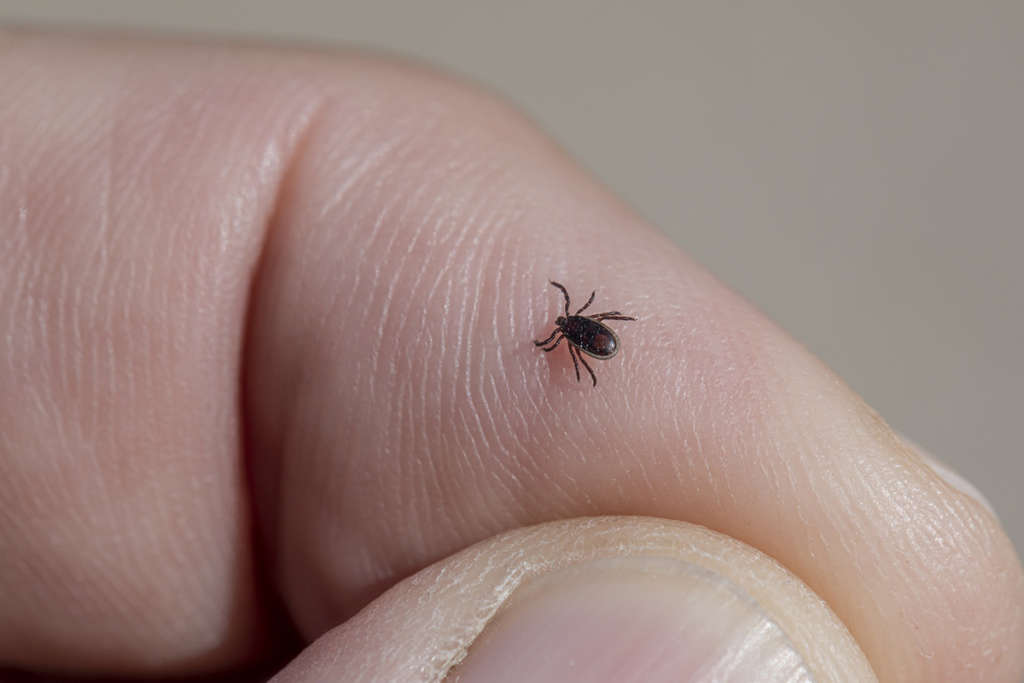

6. Talk To Your Vet About Testing & Treating For Tick-Borne Illnesses
Did you know that tick-borne illnesses can show up on tests before symptoms start? Don’t wait for your dog to get sick—it is far easier on them (and you) to be proactive by testing for tick-borne disease, and treating them if they come back positive. Once dogs get sick, it is always a harder and longer road to treat them. Your vet will be able to recommend when and how to best test your dog; sometimes it takes a few months for diseases to show up on a blood test.
Depending on what part of the country you live in, and which tick-borne diseases are most prevalent there, your vet may also recommend some post-tick bite preventative medicine to protect against disease. This is only effective within a certain (short!) window of time after the tick bite, so don’t delay in giving your vet a call if you find a tick.
Tick Bite Prevention
Finding a tick on your dog is a clear sign that you need to have a chat with your vet about tick preventative medications. The absolute best way to prevent tick bites (and the diseases they transmit) is to avoid them altogether.
Prompt removal of a tick, testing, treatment, and prevention are the keys to preventing or addressing tick-borne diseases in our pups.


If your dog acts sick at any time of year and has a habit of romping around outside during tick season, keep in mind that tick-borne diseases can have a variety of presenting symptoms. When you take a sick dog to the vet, make sure to mention whether they are an outdoorsy type (and if they are already on a tick preventative medication). Symptoms that could be related to a tick bite include:
- Fatigue
- Loss of appetite
- Fever
- Swollen joints or lymph nodes
- Neurological symptoms
- Rapid breathing
- Difficulty using one or more legs
How To Remove An Embedded Tick Head
Oh no! You just removed the tick and realized its head or other body parts are still stuck in your dog’s skin, but don’t panic. Use tweezers to remove the remaining parts ONLY if they’re easily accessible, but DO NOT keep picking or digging into your sweet pup’s skin trying to get it out.
Not only is it painful for your dog, it can also lead to infection. If you can’t immediately get a good grasp, it’s best to clean the area with rubbing alcohol or soap and water and just leave it alone. Your dog’s body will do its thing and gradually push the rest of the tick out on its own, or heal over it and push it out over time with new cell growth. You can always swing by your vet for their two cents as well.
If the area becomes red or inflamed, it’s time to make an appointment with your vet.


How To Identify A Tick
Ticks are often black, brown, tan, or grey and, like spiders, have 8 legs. They can range in size from about 1mm to 3mm (or a poppy seed to a sesame seed). When engorged, they can be as big as or larger than a pencil eraser.
Don’t mistake a harmless skin tag for a tick—touch it with a gloved finger and see if any legs start wiggling. Ideally, do this outside in case the tick has not yet attached and attempts to skitter away.
Prevention Methods
In addition to tick preventative medications, there are several things you can do at home to reduce the chances of finding an unwelcome hitchhiker on your dog.
- Always check your dog thoroughly after being outdoors. Ticks love dark, warm places, so take special care when combing around in and around the ears, tail, between the fore and hind legs, toes, and under the collar.
- Already spot a tick? In a pinch, try bathing your dog thoroughly with flea and tick shampoo (Note: This is not a preventative, it only aims to kill fleas and ticks on contact).
- Treat your yard with tick spray, and regularly wash pet bedding (the dryer is really what gets ’em).


This article has been reviewed by Margo Hennet, DVM.
Margo Hennet, DVM, cVMA, and veterinarian at BARK is a canine nutrition, health, & wellness connoisseur. She has a combined 10 years of experience in clinical medicine, research, and education—that’s 70 dog years of know-how—and graduated from Colorado State University as a Doctor of Veterinary Medicine. She completed specialized training in internal medicine prior to working as a general practitioner in Colorado, has authored peer-reviewed publications and textbook chapters, holds certification in veterinary medical acupuncture, and is a member of the American Academy of Veterinary Nutrition and American Veterinary Medical Association.







